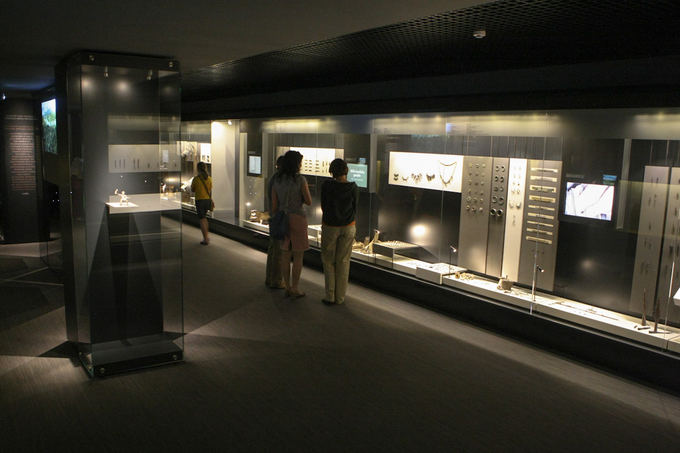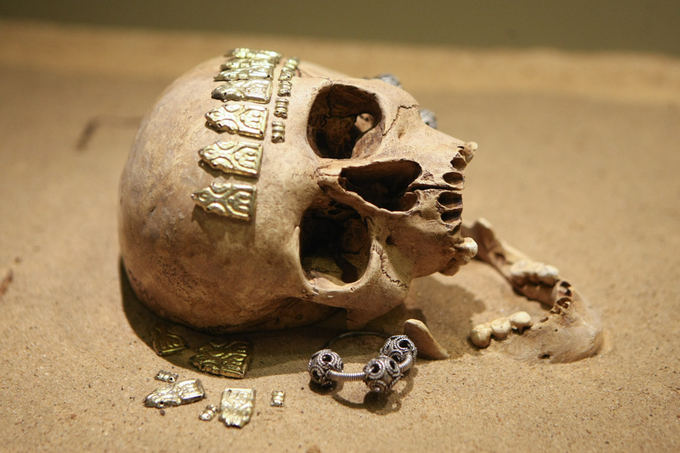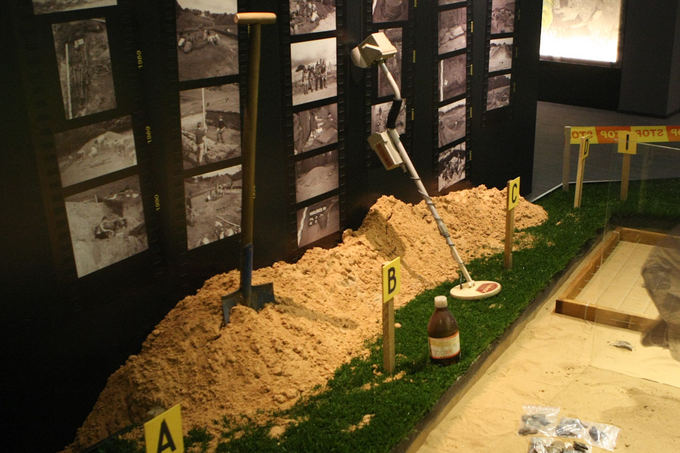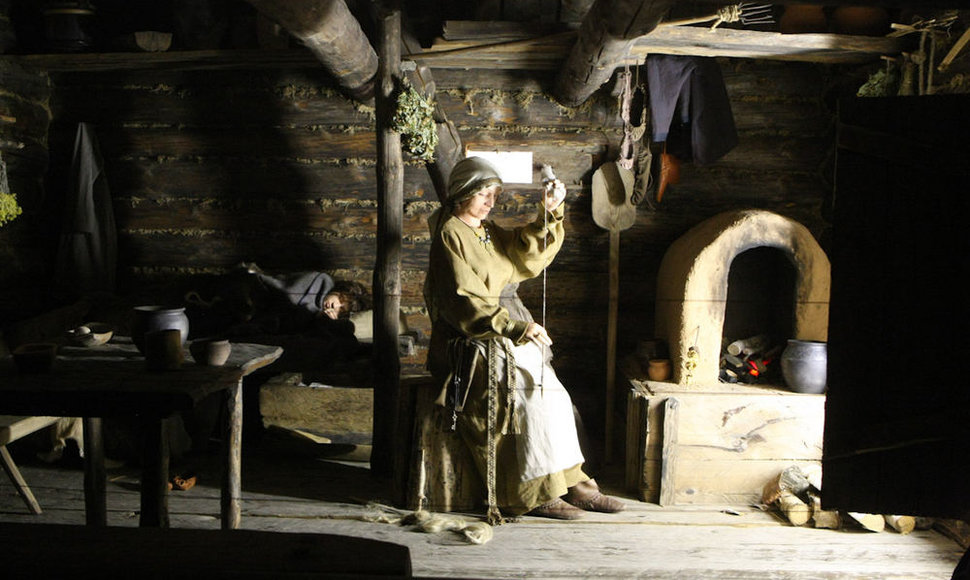 |
| Juliaus Kalinsko/„15 minučių“ nuotr./Kernavė chaeological museum |
As one approaches the Church of Kernavė, a rather modern-looking museum building on the left side of the road catches one's attention from afar. Its façade was inspired by archaeological findings from the site.
As one enters the museum, a sense of modernity exhibited by the interior design makes one forget all the pre-conceptions about museums being naphthalene-soaked throwbacks of boredom.
No stretching of imagination
We take a stairway descending to duskiness – a veritable time machine taking us back to the past of Kernavė, once the capital of medieval Grand Duchy of Lithuania. The first room houses a time-line which shows how the site changed over millennia: when glaciers retreated; when the first hunters came; when people settled in to cultivate the land, when it entered its age of prosperity in the Middle Ages. Finally in 1390, Kernavė, one of the biggest Lithuanian settlements of the time, was burned down.
Special screens in the museum display images recreating different periods in the town's life. Animation brings to life the settlement with moving human figures and architecture of the period. Visitors willing to know more about Kernavė are required no more to stretch their imagination in order to visualize how Lithuanian ancestors lived centuries ago.
Beneath the screens, displays of archaeological findings from each period supply tangible sources of information about the past.
In order to explore the Kernavė cultural park – stretching 194.4 hectares – we can find sites that every item was taken from on touchscreens, displaying the entire extent of archaeological excavations in the area. So far, only 2 percent of the park's territory have been thoroughly investigated.
If one spends several minutes looking at another screen put on the ground, one can preview the entire process of archaeological excavation – from removing the sod to restoration of the finds. A number of photographs show snapshots from actual excavation works.
 |
| Juliaus Kalinsko/„15 minučių“ nuotr. |
21 video narratives
The second room houses information terminals showing videos on different topics (enterprises in Kernavė, language, etc.) or, alternatively, one can read the information in writing. Stories are provided in both Lithuanian and English.
If one is weary of too much history, one can play educational games on those same terminals. After seeing the entire exposition, visitors can check what they have learned by taking interactive tests.
On the right, a display exhibits legacies of the human world: artefacts of stone, flint and iron, creations of ceramicists, goldsmiths and other artisans. If one feels puzzled about what any particular artefact found by archaeologists could have been used for – all it takes is to look up at the screens. Modern-day people demonstrate how all the crafts looked in practise. A total of 21 video narratives are displayed in the museum.
 |
| Juliaus Kalinsko/„15 minučių“ nuotr./Kernavė |
Workshops
The museum and its newly-built vaults keep over 20 thousand objects. Only 1.5 thousand are put on display. On the left side of the room, we can explore the traditions of burial, ancient urns and remains that were scattered in a nearby river.
The third room invites us to enter homes of 13-14 century Kernavė villagers. Drawing on archaeological finds, historians have recreated house interiors complete with details and tools of everyday use.
After inspecting the exposition, one more feat is in store for us – an educational workshop. Visitors who pre-book one of the educational workshops offered by the museum staff can try setting a fire, grind wheat using prehistoric grindstones, or throw pottery.
 |
| Juliaus Kalinsko/„15 minučių“ nuotr./Kernavės archeologinės vietovės muziejaus ekspozicija |
Saulius Vadišis, director of State Kernavė Cultural Reserve, says:
“Kernavė is not only about picturesque landscapes, it keeps a lot of valuable artefacts. Underneath the soil, there lay 11 thousand years of human life that archaeologists try to unearth and show to modern people. The goal of the new museum exposition is to make this territory – important to both Lithuania and the world – accessible and attractive to visitors. It was a very complex project: the museum building did not have heating or infrastructure, it was something akin to a tent in the Soviet times. We've invested 16.4 million litas (4.7 million euros) into reconstruction, technical and exposition equipment. Our visitors can see three exposition rooms, take part in educational workshops, use a conference hall.”



















